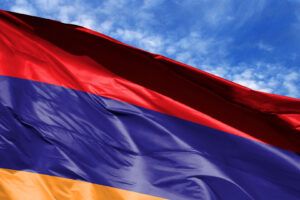Additional financing in the amount of EUR 13.4 million (US$ 15 million equivalent) to the Lifeline Road Network Improvement Project (LRNIP) in Armenia will help improve access to markets and social services through the rehabilitation of an additional 61 km of the road network, as well as its climate resilience and safety management. The loan was approved May 9 by the World Bank’s Board of Executive Directors.
Despite a visible improvement in the last decade, about 40 percent of the roads in Armenia remain in poor condition, and one-third of the rural population lacks access to an all-weather road. There is still a significant investment backlog for rehabilitation and maintenance in the country. Trade from rural areas is held back due to restricted connectivity to markets and poor road conditions that can result in substantial opportunity losses for some communities. Therefore, facilitating trade and connecting local production to markets remains of paramount importance for reducing rural poverty and promoting economic growth in the country.
“The rehabilitation of additional lifeline roads will facilitate better access to jobs, markets, and other basic social services for over 60,000 people in the provinces,” said Sylvie Bossoutrot, World Bank Country Manager for Armenia. “It is vital that rural infrastructure is improved and maintained to promote agricultural trade, so that farmers and small businesses are able to bring their products to market more easily and at a lower cost, thereby stimulating economic growth and local employment.”
The proposed activities will support the Ministry of Transport, Communication and Information Technologies (MoTCIT) in screening the road infrastructure for climate risks in areas prone to natural hazards including landslides, rockfalls, and floods. This risk assessment will be accompanied by identification of remedial actions.
The additional financing will also help Armenia improve road safety and asses the real cost of road crashes to people’s lives and the economy. This will be implemented through connecting all key road safety stakeholders with a consolidated modern crash data collection and management system, as well as capacity building in road safety management.
“The project also aims to continue supporting the ‘Safe Village’ program through small road safety civil works, traffic control measures around schools, kindergartens, and community centers, combined with awareness campaigns at communal level,” added Nargis Ryskulova, Head of the World Bank project team. “As of today, safe village schemes are implemented in 66 communities. We expect the number of safe schemes to reach 84 by the end of 2019.”
Implementation of the on-going project has progressed well. The proposed additional financing will raise the total length of roads to 450 km, 299 km of which have already been rehabilitated. Since the launch of the first Lifeline Road Improvement Project (LRIP) in 2009, there has been a noticeable improvement in local employment and journey time has declined on average by 40 percent, while 433 km of lifeline roads have been upgraded across the country.
The detailed designs of the first-year program – seven road sections totaling 27 km located in Ararat, Syunik, Armavir and Gegharkunik regions – have already been prepared under the parent project. The remaining 34 km sections will be designed during the summer and implemented in five regions.
Total financing for this project is EUR 16.75 million, of which EUR 3.35 million will be Government contribution. The World Bank will provide EUR 13.4 million (US$ 15 million equivalent) through an IBRD loan of variable spread, with a 14.5-year grace period and a total repayment term of 25.5 years.
Since joining the World Bank in 1992 and IDA in 1993, commitments to Armenia have totaled approximately US$ 2,379,734 million.




